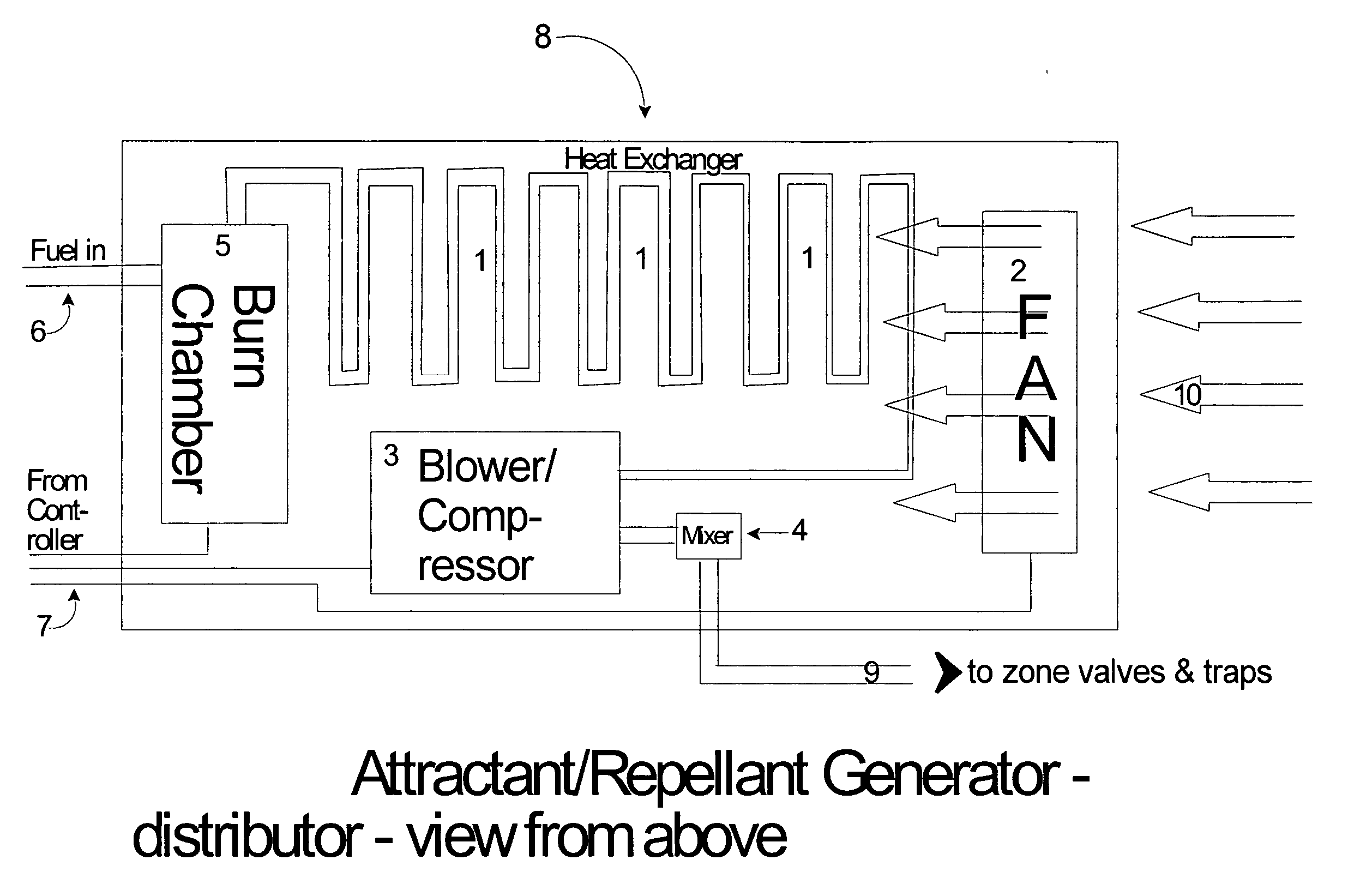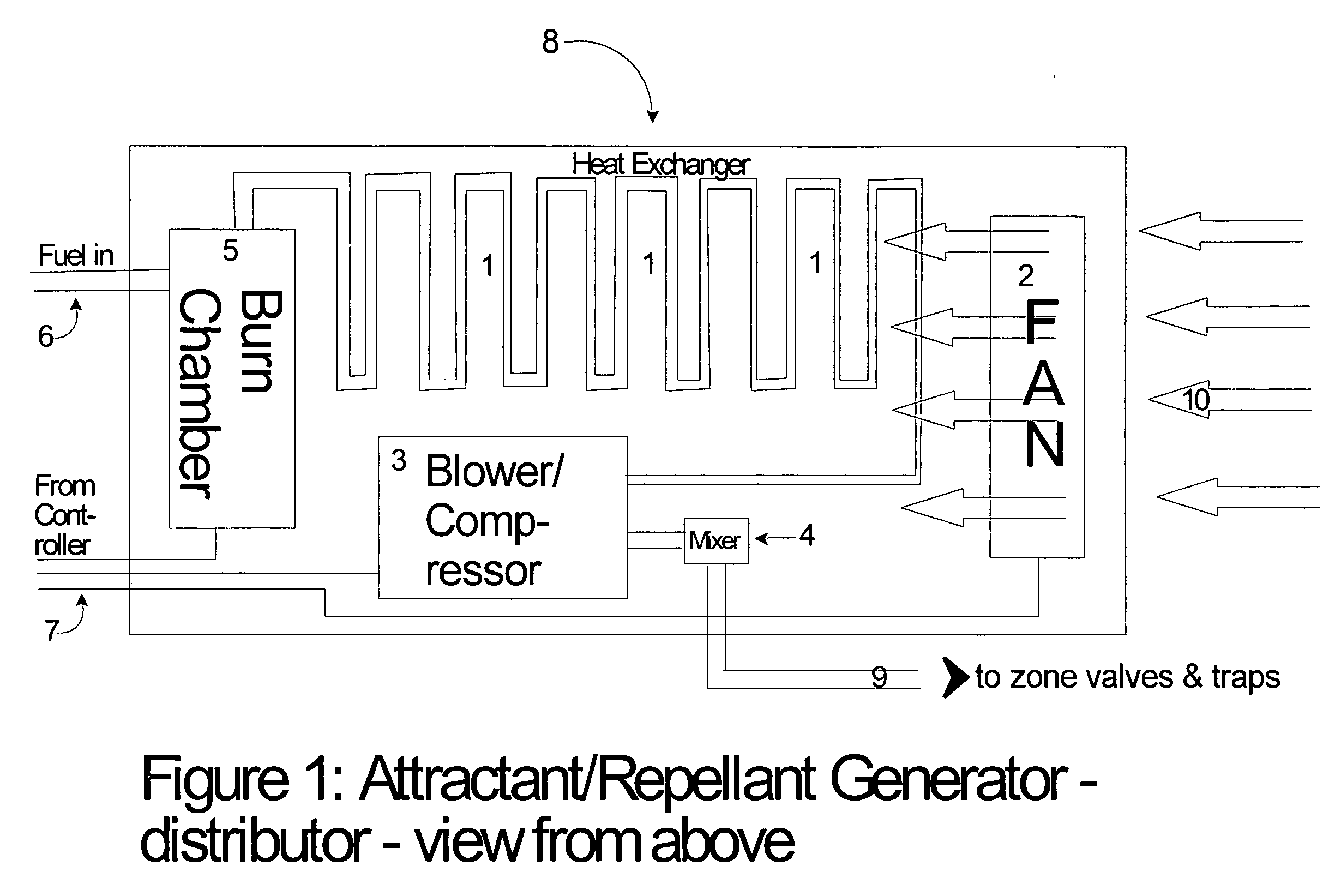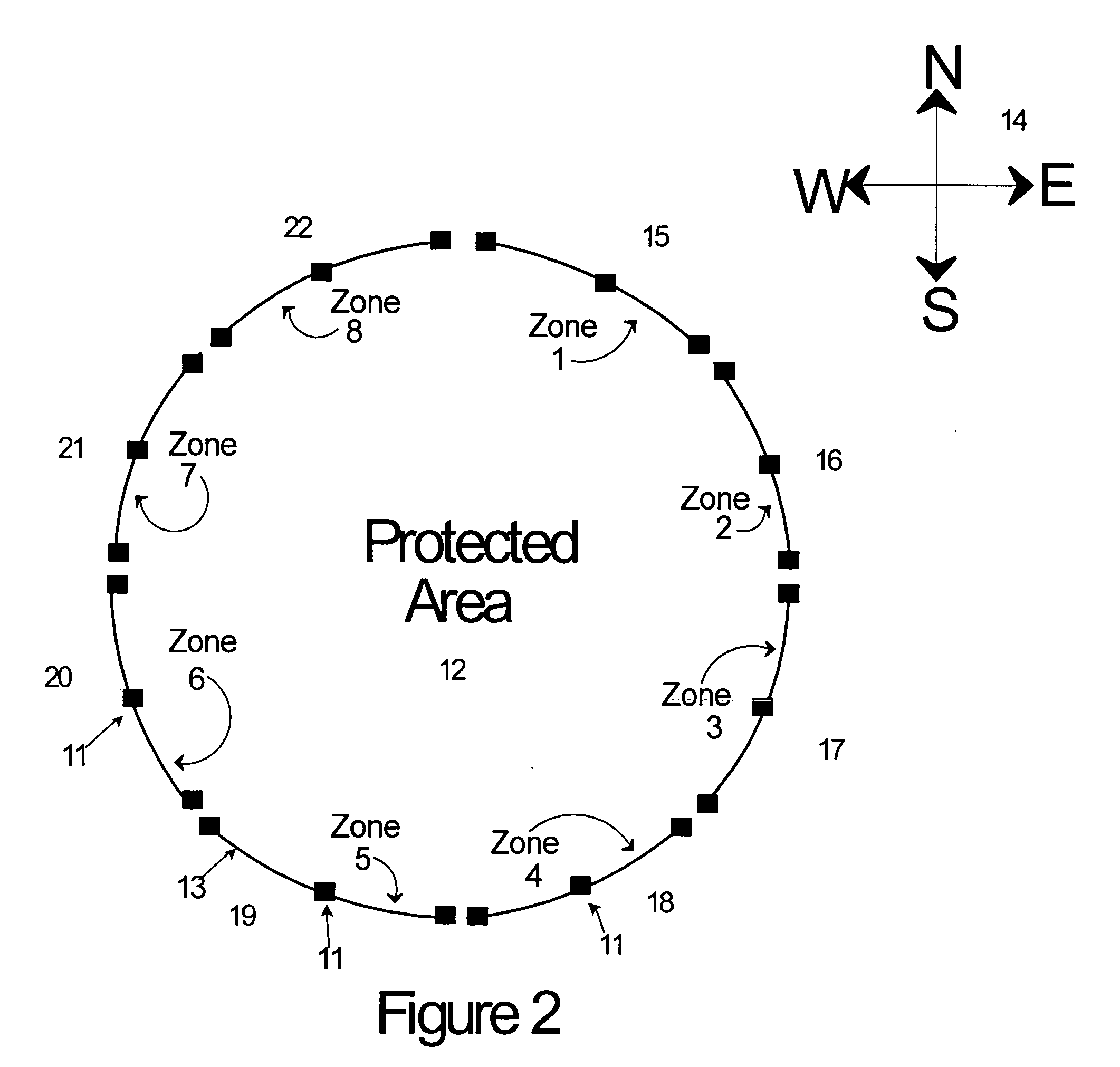Flying insect management system
a management system and flying insect technology, applied in the field of flying insect control, can solve the problems of carrying and transmitting diseases, no non-poisonous methods have been truly effective and effective, and one million deaths worldwid
- Summary
- Abstract
- Description
- Claims
- Application Information
AI Technical Summary
Benefits of technology
Problems solved by technology
Method used
Image
Examples
Embodiment Construction
[0011] A micro controller 50, FIG. 6, receives environmental or other relevant data 38-43 (either wirelessly or via wire), including current wind speed 38, wind direction 39, rainfall 40, outside temperature 41, humidity 42, barometric pressure 43, and delivers an attractant or a repellent generated by the attractant / repellant generator in FIG. 4. Many biting insects, for example, will roost and are unlikely to feed in the event that the ambient air does not contain enough moisture, as it will dehydrate their wings and body. Many biting insects cannot fly in high wind conditions and are unable to feed on or pester humans. Many flying insects cannot fly if it is raining. Biting insects are much more active before an approaching storm, when the barometric pressure is falling quickly. Environmental conditions are ever changing, so this instant invention monitors these ever changing conditions and operates the system according to the inputs it receives. The attractant or repellant is th...
PUM
 Login to View More
Login to View More Abstract
Description
Claims
Application Information
 Login to View More
Login to View More - R&D
- Intellectual Property
- Life Sciences
- Materials
- Tech Scout
- Unparalleled Data Quality
- Higher Quality Content
- 60% Fewer Hallucinations
Browse by: Latest US Patents, China's latest patents, Technical Efficacy Thesaurus, Application Domain, Technology Topic, Popular Technical Reports.
© 2025 PatSnap. All rights reserved.Legal|Privacy policy|Modern Slavery Act Transparency Statement|Sitemap|About US| Contact US: help@patsnap.com



